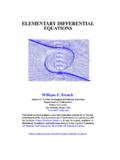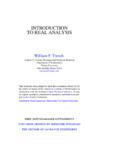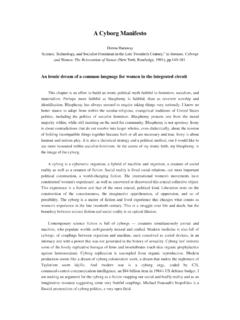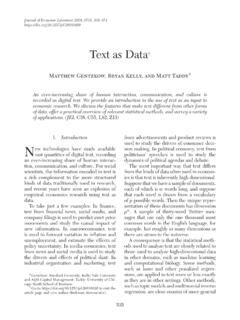Transcription of New York State Next Generation Learning Standards for ...
1 NEW YORK State . EDUCATION DEPARTMENT. New York State next Generation GRADES Learning Standards for Literacy in 6-12 History/Social Studies, Science and Technical Subjects New York State Education Department ENGLISH LANGUAGE ARTS Learning Standards 1. NEW YORK State . EDUCATION DEPARTMENT. Introduction to the New York State next Generation Grades 6-12. Learning Standards for Literacy in History/Social Studies, Science, and Technical Subjects In 2015, New York State (NYS) began a process of review and revision of its current English Language Arts Learning Standards adopted in January 2011. Through numerous phases of public comment and virtual and face-to-face meetings with committees consisting of NYS educators, special education and English as a New Language teachers, parents, curriculum specialists, school administrators, college professors, and experts in cognitive research, the New York State next Generation English Language Arts Learning Standards (Revised 2017) and New York State next Generation Grades 6-12 Literacy Standards in History/Social Studies, Science, and Technical Subjects (Revised 2017) were developed.
2 These revised Standards reflect the collaborative efforts and expertise of all constituents involved. The New York State next Generation English Language Arts Learning Standards (Revised 2017) and Grades 6-12 Literacy Standards in History/Social Studies, Science, and Technical Subjects (Revised 2017) consist of revisions, additions, deletions, vertical movement, and clarifications of the current English Language Arts Standards . They are defined as the knowledge, skills, and understanding that individuals can and do habitually demonstrate over time because of instruction and experience. The Grades 6-12 Standards for Literacy in History/Social Studies, Science, and Technical Subjects address goals for instruction in reading and writing embedded in the content area instruction. They represent the literacy skills and values that students will need in order to succeed in social studies, science, and other technical subjects. Because every content area has discipline-specific literacy demands, these skills should be developed across the curriculum to ensure that students become effective communicators in each of their academic disciplines.
3 How to read the Grades 6-12 Standards for Literacy in History/Social Studies, Science, and Technical Subjects Standards STRUCTURE OF THE Standards DOCUMENT. The heart of the document consists of grade-band specifications of an overall anchor standard. These anchor Standards represent broad statements about the expectations for students as they prepare for high school graduation, positioning them for potential success in either college or careers, or both. Each of the grade-band Standards (presented in Grades 6-8 and Grades 9-12 bands for Reading and Writing) represents a set of more specific expectations. For each anchor standard, a detailed sweep of expectations rises from sixth grade to the graduation-ready level of twelfth graders. Learning Standards define what a student should know and be able to do. Anchor Standards represent broad statements about the expectations for students as they prepare for high school graduation, positioning them for college and careers.
4 The Anchor Standards included in Literacy 6-12. are related to the ELA Anchor Standards , but include some slight differences to ensure alignment with the content areas. New York State Education Department Learning Standards FOR LITERACY IN HISTORY/SOCIAL STUDIES, SCIENCE AND 2. TECHNICAL SUBJECTS. NEW YORK State . EDUCATION DEPARTMENT. Grade-level and Grade-band Standards describe more specific end-of-year expectations about what students should understand and be able to do at a specific grade level or grade band. Strands define the main organizational categories for English Language Arts and Literacy (Reading, Writing, Speaking and Listening, and Language). Range, Quality, and Complexity of Student Reading sections clarify the reading and text complexity expectations for each grade level. This is located at the beginning of the Reading Standards at each grade level or grade band. EXAMPLE. New York State Education Department Learning Standards FOR LITERACY IN HISTORY/SOCIAL STUDIES, SCIENCE AND 3.
5 TECHNICAL SUBJECTS. NEW YORK State . EDUCATION DEPARTMENT. Key Points for Grades 6-12 Literacy in History/Social Studies, Science, and Technical Subjects Standards Shared Responsibility for Literacy Development Although literacy development certainly resides in the domain of the English Language Arts classroom, teachers in other disciplines have recognized the importance of literacy to their own subject areas. Concurrent with the recent revision of the English Language Arts Standards was the revision of the Standards for Grades 6-12 Literacy in History/Social Studies, Science, and Technical Subjects. The intent is for these two sets of Standards to work together. In this way, teachers from across the curriculum can plan their individual lessons knowing that they have common expectations for their students' literacy, as they pursue success in each of the content areas. This common goal shows up even more fundamentally at the elementary level, where a typical instructional model includes a teacher who provides instruction in a variety of subjects, including ELA.
6 Although the Literacy Standards share similar goals with the ELA Standards , they also recognized that each subject area has its own discourse practices and nomenclature. The Literacy Anchor Standards , while closely related, are somewhat different from the ELA. Anchor Standards . These differences are intentional. It is important to recognize that each subject area has its own special literacy demands. By design, these Standards avoid the one-size-fits-all message that identical Standards would imply. What is Literacy? A high degree of proficiency in literacy is essential as students attempt to acquire and build knowledge in each of the content areas. Students must be able to read social studies textbooks, analyze historical documents, follow scientific procedures, and discuss complex written problems, as well as respond to issues in their subject area content through speaking, writing, and crafting digital responses. Students must also acquire content specific vocabulary for each of the disciplines in order to achieve success.
7 In social studies and history, teachers can apply these Standards as students interpret and analyze both primary and secondary sources. Students need to develop a capacity for determining a text's central idea (Reading Standard 2) as well as to understand how point of view shapes a document's message and structure (Reading Standard 6). In science classes, students need to interpret content specific words and phrases ( moraine, mitochondria, valence, vector analysis) in order to understand key scientific concepts and information (Reading Standard 4). In all technical subjects, students encounter charts, graphs, diagrams, maps, and data sets presented in a variety of media. They must be able to understand and analyze these data in a variety of formats (Reading Standard 7). Each content area also has its own methods and practices for having students demonstrate their knowledge and understanding. The Standards for writing require students to write arguments to support claims (Writing Standard 1), to conduct research (Writing Standard 5), and to use technology to produce and publish their analyses (Writing Standard 6).
8 New York State Education Department Learning Standards FOR LITERACY IN HISTORY/SOCIAL STUDIES, SCIENCE AND 4. TECHNICAL SUBJECTS. NEW YORK State . EDUCATION DEPARTMENT. Integration Clearly, these literacy Standards should not be taught in separation from the content area Standards . For example, the Literacy Standards are designed to support and connect with the following NYS Learning Standard areas: P-12 Science Standards : Social Studies Standards and Framework: Career and Development and Occupational Studies Standards : As most teachers know, a well-designed, richly developed lesson includes many Standards from across a range of domains. Teachers blend reading with writing; they infuse language and vocabulary throughout their lessons; and speaking and listening play important roles in every classroom activity. Attention to and practice with digital media both in reading and writing are also essential to this blend of approaches. A. close reading of the Standards reveals that nearly all of these Standards connect to the students' interactions with content-specific text.
9 In other words, these Literacy Standards are intended to be integrated with the content Standards for each subject area. Standards -based Curriculum Development Teachers and other educational leaders at the local level should use these Standards to develop or guide their selection of curriculum, programs, and individual lessons. Each district, building, and classroom should explore and choose Best Practices to achieve these Standards , while matching the approach to individual communities, work teams, students, etc. Standards introduced and taught at one grade level should be reinforced and continued through graduation. New York State Education Department Learning Standards FOR LITERACY IN HISTORY/SOCIAL STUDIES, SCIENCE AND 5. TECHNICAL SUBJECTS. NEW YORK State . EDUCATION DEPARTMENT. Range, Quality, and Complexity GRADES. 6-12 of Student Reading for Literacy Grades 6-12. Range of Text Types for 6th-12th Grade Students in grades 6 through 12 should read a balance of literature and informational texts , both full-length and shorter works, including: LITERATURE: stories, drama, poetry, fiction, and other literary texts INFORMATIONAL TEXT: biographies, autobiographies, books and articles about science, art, history, social studies, and information displayed in charts, graphs, or maps, in both print and digital sources.
10 These texts should include discipline specific material (both full-length and excerpts) written for a variety of audiences. Examples include texts written for students, such as textbooks and trade books, as well as those written for the public, including blogs/websites, books, films, and magazine and newspaper articles. The Range of Text Types could also include texts written by members of a discipline community for others in that community, such as articles appearing in professional journals and on the websites of professional organizations. These texts could include primary sources, maps, surveys, tables, and charts. Text Complexity Expectations for 6th-12th Grade By the end of the school year, students should read and comprehend literary and informational texts that are appropriately complex at or above grade level. New York State Education Department Learning Standards FOR LITERACY IN HISTORY/SOCIAL STUDIES, SCIENCE AND 6. TECHNICAL SUBJECTS.
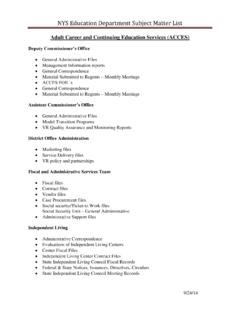
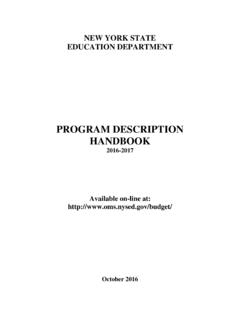
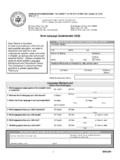
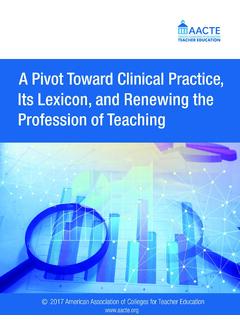
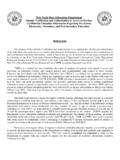
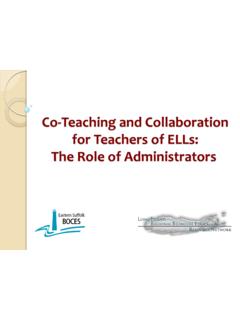

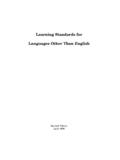

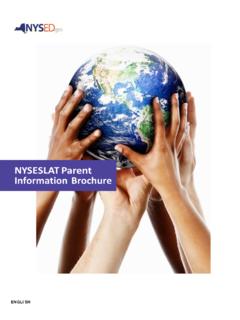
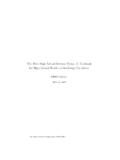
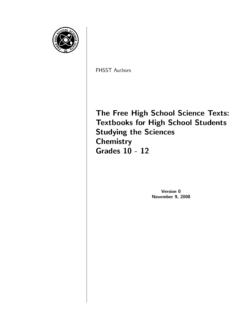



![The Ontario Curriculum, Grades 1-8, Language [revised] 2006](/cache/preview/d/5/3/5/d/c/7/4/thumb-d535dc7439a04910d8a17bf7f1d6b83f.jpg)
